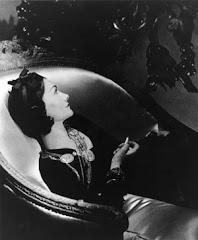
Dorian Leigh has died at the age of 91.
She was born in San Antonio, Texas, the plainest of four Parker sisters, her features too pronounced for the preference for plucked brows and rococo lips that prevailed through the 1930s. She married at college and had two children before her divorce in 1937. Her parents took her and the children back into their home in Queens, New York City, and her chemist father encouraged her in education. She studied calculus at New York University and went on an engineers' training programme. She worked first as a draughtsman for the navy and then on wings for the eastern aircraft division of General Motors, but quit, she claimed, because her suggested design improvements were rejected.
She then took a job as an advertising copywriter in New York. In need of extra money, she went to a model agency run by Harry Conover, who recognised her face as suddenly suited to the times. Leigh's age - 27 - was problematic, so he instructed her to tell Diana Vreeland, fashion editor at Harper's Bazaar, that she was 19. Vreeland ordered Leigh to leave the eyebrows alone and report back the next day to model a hat for the photographer Louise Dahl-Wolfe, leading to her appearance on the cover for June. The movie Cover Girl, a montage of newsstand displays starring Rita Hayworth, was the fashion fantasy of 1944, and Leigh - the Parker was dropped out of courtesy to her family - was the sophisticated edition of Hayworth.
Leigh's real career as the zeitgeist began the next year. Charles Revson had added matching lipsticks to his Revlon nail enamels in 1940, and soon US wartime prosperity, which increased the purchasing power of working women, allowed him to advertise his lips and nails combos in full colour. For 1945's Poison Apple campaign, "the most tempting colour since Eve winked at Adam", Revlon hired Leigh as the face that lost paradise. She became the Revlon fantasy dame, starring regularly in its promotions, including the 1952 campaign for Fire and Ice, a Madison Avenue legend. Avedon shot her in faux-Balenciaga scarlet cape, and a dress with its front spangled with silver rhinestones. The questions on the spread suggested Leigh's unconventional character ("Do you sometimes feel that other women resent you?" "Do sables excite you, even on other women?") A senior advertising executive who hated it said Leigh looked like "a little tootsie whom the Aga Khan spotted on the Riviera". But Vogue thought her classy, and ran it big. Leigh had introduced sister Suzy to the Eileen and Jerry Ford agency, and she succeeded Leigh as Revlon goddess.
People were more interesting in the olden days.
